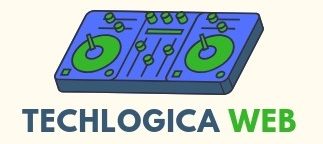Unless you’re browsing through a website, catalog, or brochure, chances are you won’t be seeing a lot of old-school photography shortly. Computer-generated imagery (CGI) is steadily and increasingly being used by automotive OEMs, due to its versatility, convenience, and cost savings.
In the case of automotive portals, this is even truer.
The visual appeal of cars is very high among web visitors. An automobile portal needs to have high-quality vehicle images to maintain its popularity and generate revenues.
Using one solution to solve multiple problems
It is time-consuming and expensive to take crisp pictures of cars, especially in cases of image quality drops. If we told you, however, you could get stunning images at a significantly reduced cost, would you believe us?
With CGI, vehicle photography is headed for the future.
Using computer-generated imagery is the way to go when it comes to auto portals filled with images that show even the tiniest details clearly. In addition to our CGI solution, we have built a software package called Video Studio that makes integrating CGI easy.
Why Do We Need CGI?
With computer-generated images, clients enjoy more flexibility than they ever could with conventional photography.
A scanned vehicle can be identified from any angle, in any location, with any lighting, which gives you more options than what conventional photography offers.
CGI extends far beyond this initial capability, which is the most exciting part of it all.
You don’t need to reshoot images of a car whose manufacturer has just released a new variant or trim level if your portal already features the previous one. You can accomplish your tasks rapidly and easily with CGI.
Adding a new background or animating the vehicles is the same process. CGI handles it seamlessly.
Capabilities to use the Internet more directly
Izmofx products go further than just high resolution and smooth animation and include simulations of games and the newest upcoming trend, virtual reality (VR). In this way, prospective clients can interact with the vehicle as if it were truly theirs. Taking the experience to another level, VR is extremely believable thanks to its high degree of realism.
A recent study shows that computer-generated imagery displays images that are realistic and deliver dynamic images, making it easy for automotive portals to engage with their customers engagingly. CGI car photography is virtually indistinguishable from an old-fashioned photograph of a car, yet it delivers significant efficiencies.
How CGI Can Save You Time In The Long Run
A fierce debate still rages over CGI and photography. Some argue that real-life photography can’t replace the way it captures tangible objects. According to them, CG can’t be compared to photography because it looks better and more realistic than the real thing.
There are merits to both sides. There was a time when digital versus traditional photography was the subject of debate – both had their pros and cons, but in this case, digital stood out. The past is repeating itself, and CGI cannot be compared to traditional photography. Saving time with CGI is an obvious benefit.
It’s time to act
Photographic techniques aren’t going extinct, but neither is rendering CGI a blink in the eye. On the other hand, CG can save you money and time in the long run. For instance, let’s take a simple shot of a car. A simple white background, a DSLR, and the car. Several hours are spent trying to get the perfect lighting, different angles, and different shots. Finally, you get your shots. Mission accomplished. Then you have to model.
Let’s say you return to your desk and look over the photos taken at the shoot. Cars must have different angles or specs based on trim levels. Your passion for this car demands that it looks perfect. Having done that, you have to go through the laborious process of rescheduling the shoot to have everything set up again, and even then, the result isn’t guaranteed to meet your expectations. The weather may be awful, the roads may need to be repaved, and you may not be able to access the car; there is a long list of possible roadblocks.
When you’re working with CG, you just need to move the virtual camera or the car to see it from a particular angle.
Taking action quickly
Consider the same situation multiplied by multiples. There may be multiple colors, trims, or spec levels available on the car. Computer-generated images help you save time. There is no way you’ll have time to take pictures of every possible combination – in fact, you can’t. CGI allows you to make these changes instantly. Although it may take time to create the first PDF, you will save time in the long run.
When shooting on location, the problem is the same, but there is the added difficulty of ensuring that the right people and products are in the right places. If you combine both scenarios, however, the process becomes much simpler.
Shoot your footage on location, then add the key visuals afterward. Maintaining flexibility is made possible. The actual design of the car can be modeled digitally if the project can’t be completed in time for the shoot. Because CGI reacts much faster to alterations, there is a shorter period between conversations.
There is always going to be a place for photography in the world. CGI is also used in the automotive industry, just as it is in film and television. In other words, if you’re concerned that time isn’t on your side, rest easy. Turn to the computer for help.
Computer graphic design can also be of use in facilitating and inspiring a wider variety of marketing ideas. Moreover, one can customize marketing campaigns by using them based on different markets and demographics.
For photorealistic CGI simulations, marketers are no longer required to shoot with physical prototypes. Using this method, they can quickly get to market and reduce both their budgets and the environmental impact of a standard car shoot.
